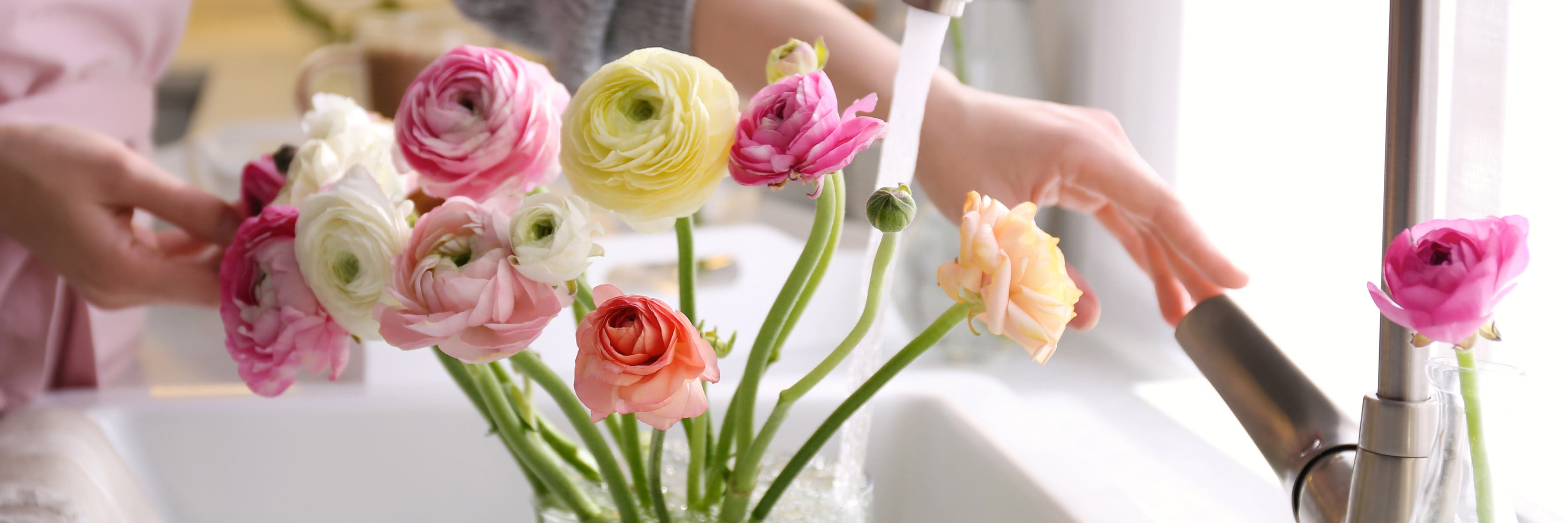
Do Your Blooms Pass the Freshness Test?
We often see bouquets of seemingly fresh flowers all around town, from grocery stores and farmers' markets to your local florist. While it can be easy to pick up a beautiful floral arrangement just about anywhere, you might not be getting flowers as fresh as you would expect. Since we are dedicated to offering the highest-quality and always fresh blooms for you and your loved ones, we have become experts at quickly identifying the freshest flowers! The next time you want to ensure your stems, petals, and leaves are healthy, young, and thriving, follow these seven steps so you can identify the freshness of flowers like a professional.

Strong, Tall, and Vibrant Flower
Wilting and fading color are the most obvious signs of an older bloom. While there are ways to help a wilting flower regain some vibrancy, it is impossible to reverse the wilting and color fading processes. Always look for the strongest flowers standing tall and proud with vibrant petals and eye-catching hues.

Healthy and Colorful Petals
Finding brown or black spots are not only signs that signify a not-so-fresh flower, but a flower that was possibly cut incorrectly, meaning the quality of the bloom has been sacrificed from at least the time of harvest. Bruises, discoloration, and transparency point to a flower past its peak freshness. Be sure that each petal is both colorful and healthy.

Small or Closed Blooms
Fully open blooms often indicate that the flower is already a few days old! The freshest flowers you can find will still be in the process of opening up to their fullest blooms. Some flowers, especially tulips, are best purchased before the flower even beings to open. Remember, the tighter the bud, the younger the bloom, which means a longer vase life.

Bright Green Leaves
The leaves of flowers are some of the most important details to pay attention to when identifying the freshness of a flower. Healthy, fresh flowers will have lovely, firm, green leaves, calyx, and sepals, or the cup-like greens at the base of the flower attached to the stem. Sagging leaves or leaves falling off without external assistance means the flower is not very fresh. If you find brown or spotted leaves, you can be sure that you are dealing with an older flower or one with bacteria growth. Finding leaves with holes indicates that the plant was infested with insects before being harvested. Although the flower may be freshly cut, leaves with holes signify that the flower lacks luster, quality, and care.

Sturdy and Firm to Touch
Strong stems are tell-tale signs that you have found a young and healthy bloom. You can often tell just by looking at a flower's stem if it is firm and healthy versus bending or broken. However, if a bloom is at its peak of freshness, you may need to inspect its stem closer. Move your fingers from the underside of the petals and down the stem to observe its firmness. It's a good sign if the stem is sturdy, but if it is flimsy, you can expect the flower to wilt sooner than later. You can also listen to the petals and leaves as you move your fingers underneath. Faint rustling is a good sign of freshness.

Green or White Ends to Stems
When looking at the stems of flowers, be sure to check the bottoms. Fresh cut stems will appear nice and green with a white center. If you pick up a flower to inspect the stem's cut, seeing yellow, brown, or frayed centers is your indication that the bloom was not freshly cut. You can also observe the quality and care of a flower based on the wetness of the stems. Properly stored flowers will have wet stems as they should be stored in water and a proper floral cooler.

No Obvious Seeds or Loose Pollen
The final step to telling if a flower is fresh is noticing seeds or loose pollen. As flowers should be cut before reproduction, these signs should not yet be visible in fresh blooms. If you can notice the flower's seeds or falling pollen, this indicates that the flowers were cut post reproduction and past their prime.
Now that you can identify fresh flowers like a true professional, put your skills to the test! Shop our high-quality floral bouquets with the confidence that you will receive the freshest flowers possible.


